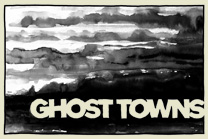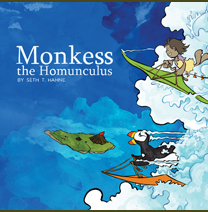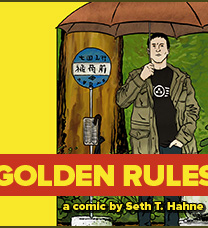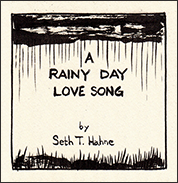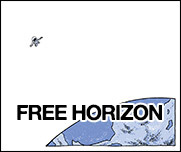Study Guide for Epileptic
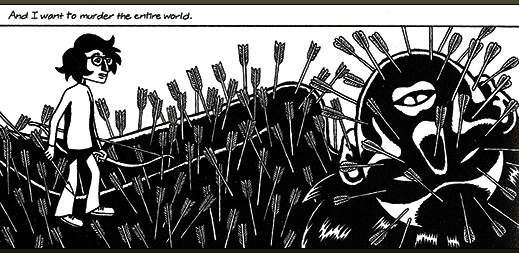
Discussion Questions
- Epileptic is the name by which the book was released in America. In its native France, the graphic novel went by the name L'Ascension du haut mal (that is, The Ascension of the High Evil), perhaps playing off the older nomenclature for seizures (e.g. gran mal or petite mal) as well as alluding to the motif-refrain of Jean-Cristophe's ascent of the mountain of his madness. How satisfied are you with the American title and would a more literal translation of the title have changed your initial perception of the book?
- Epileptic is, visually, a very dark book. The pages are often more black than white and several characters' complexions transition gradually from clean and white to black and muddled. Why do you think David B chose to use so much black in his book and did you feel the work merited all that ink? How do you think your reading of the book might have been different if he had chosen a more traditional white/black balance?
- David B uses representation in his artwork extensively, whether in abstracting his brother's condition or in illustrating people as animals or otherworldly totems. Talk about this. It's purpose, its usefulness, its efficiency in conveying his story.
- Epileptic is a very personal work on David B's part. Did you feel comfortable with the degree of candor with which he chooses to explore his family's struggles?
- Going along with that, in many ways Epileptic is more the story of David himself than it is the story of Jean-Christophe. Could you sympathize with David or did his honest presentation callous you toward him as a person?
- Did you find you could relate to any character in particular? How so?
- David B, perhaps using the book as something of a catharsis, seems to propose various reasons for the depth of both his brother's condition and his own personal mental state. How does he explore these and what conclusions does he draw?
- How do you see Epileptic explore this through his fantasy life, change of identity, and (later) cycle of dreams?
- Jean-Chrisophe's parents, desperate to save their son, make numerous decsions for the whole family. With hind-sight being as obnoxious as it is, what do you think of the decisions they made and the effects those decisions have on their three children?
- What was Epileptic's purpose and do you think it succeeds at its goals? What were the book's strong points, what were its weaknesses?
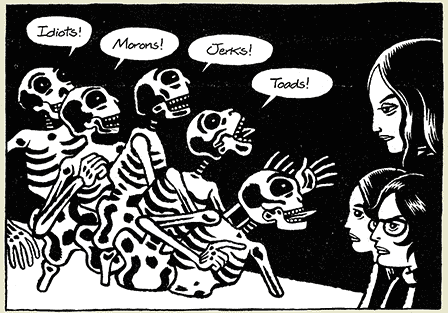
Additional Resources
There are over forty different types of epilepsy so far diagnosed. Each has its own seizure type, age of onset, triggers, and treatment. Here are some resources for further review thta may help inform discussion of Epileptic.
- Epilepsy Foundation (with articles on various syndromes and treatments)
- Epilepsy (Wikipedia)
- Anticonvulsant treatment (Wikipedia)
Additionally, here are entries on both macrobiotics and Swedenborgianism:
- Macrobiotic diet (Wikipedia)
- Swedenborgianism (Wikipedia)
Good Ok Bad features reviews of comics, graphic novels, manga, et cetera using a rare and auspicious three-star rating system. Point systems are notoriously fiddly, so here it's been pared down to three simple possibilities:
3 Stars = Good
2 Stars = Ok
1 Star = Bad
I am Seth T. Hahne and these are my reviews.
Support me by buying my art on Etsy
Review copy submission may be facilitated via the Contact page.
Browse Reviews By
Other Features
- Popular Sections:
- All-Time Top 500
- All the Boardgames I've Played
- All the Anime Series I've Seen
- All the Animated Films I've Seen
- Top 75 by Female Creators
- Kids Recommendations
- Daily Recommendations
- What I Read: A Reading Log
- Best Books of the Year:
- Top 100 of 2020-22
- Top 75 of 2019
- Top 50 of 2018
- Top 75 of 2017
- Top 75 of 2016
- Top 75 of 2015
- Top 75 of 2014
- Top 35 of 2013
- Top 25 of 2012
- Top 10 of 2011
- Other Features:
- Why I ❤ Zita the Spacegirl
- 31 Days of Comics
- Bookclub Study Guides
- Sitemap






